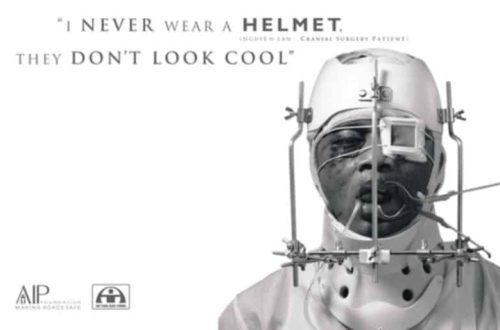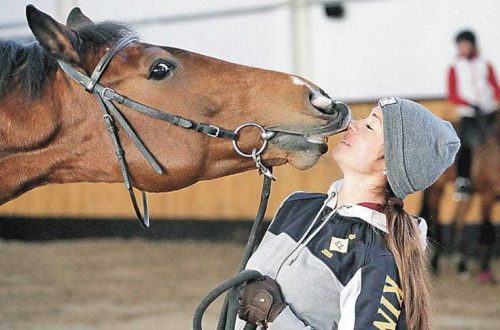
Approach to the horse
To take the horse out of the stall in some cases, for example for cleaning, it is used halter. It consists of the following parts:
- two cheek straps, when put on, lying on the horse’s cheeks;
- an angular belt that is worn on the back of the horse’s head, which is why it is also called an occipital belt;
- a portable belt covering the horse’s nose;
- a chin strap that wraps around the horse’s head from the side of the chin; chumbura to tie a horse
Check if the halter straps are upside down… Now go to the door of the stall.
Through the bars you can see that the horse is standing with its tail to the door, head to the far corner of the stall. You can’t open the door now. Your unexpected appearance may frighten the horse, and it will begin to defend itself: it will rush to the side, rear up or hit with its hind hooves. You must first establish contact with the animal, make it feel that you have come with good intentions.
By calling to the horse, you will not only make him turn his head to the door of the stall, but also, as it were, say hello and introduce yourself. Only by one intonation of the human voice, the horse is able to immediately determine your thoughts. She will understand that you are inviting her to work together and will not cause any harm. Do not allow any threatening or ingratiating intonations in your voice. Call the horse loudly.
Take the halter in your left hand by the middle of the cheek straps. Now open the door to the end and boldly enter.
Remember well: horses are taught to always approach their left shoulder first and pat their neck with their free hand – they stroke it. This is a kind of ritual that cannot be broken. Otherwise, the horse will react in the same way as a friend on the street if, instead of the usual handshake, you pull his ear. From surprise, even a close friend can treat you not at all in a comradely way.
If the horse, blocking the entrance, stood up to you with his right shoulder, you must tell her: “Accept!” Loud and hard. Now you should not ask her, but order her to do what she is obliged to do every day throughout her life … – Accept!
Now go to the left shoulder and stroke the horse, lightly pat the animal’s neck with your palm. And even better – take out a stored piece of carrot from your pocket … Do not hold the carrot – with it, the horse can grab your fingers with its powerful teeth. Put the gift in the middle of the palm, straighten your fingers and so bring it under her lips. So you said hello and introduced yourself. You can wear a halter.
Putting on a halter
Unfasten the harness, step forward from the left shoulder to the horse’s head, and grab the horse’s snoring tightly with your right hand.
Raise the halter with your left hand to the horse’s head and, using your right hand, put on the carry and chin straps. The chumbur folded in half always remains in the palm of the left hand. Move your hands along the cheek straps from the bottom up – trim them to the horse’s cheeks and fasten the crotch strap. Do not tighten it too much: three fingers should pass freely between it and the horse’s head. Check if you did everything right, if the halter belts are not twisted somewhere.
Taking the horse out of the stall
To get the horse out of the stall, take the rope with your left hand at the end, and with your right hand – under the ring. Stand at the left shoulder of the horse in the direction of travel.
Take a step forward with your left foot and at the same time move the rope forward with your right hand … The horse will never go if you take a step without sending it forward with your right hand. The same thing will happen if you make a forward send with a chimbur, while you yourself remain in place.
You must achieve a clear coordination of your movements with the movements of the horse, otherwise you will not be able to achieve mutual understanding with the animal.
Do not rush to start turning along the stable aisle until the horse’s entire body has passed the doorway. When you have turned the horse around the stable aisle, stop and pull the rod back with your right hand. At this command, the horse obediently stood in the middle of the passage.
Before cleaning, the horse is placed on denouement. It is done like this. To the left and right, thick metal rings are attached to the partitions. A braided belt with a loop or ring is tied to one of them.
Thread the rope through the loop, pull it tight and tie it to the free ring. Do not make a dead knot that cannot be quickly untied. The horse must be tied with a repair knot. To do this, fold the webbing belt in half and tie it like that. Now it is enough to pull the end of the belt – there will be no knot. The horse stands at the junction and is ready for cleaning. The denouement does not allow her to move freely back and forth.
- Alexander 14 April 2008 city
Response
- Alexander 14 April 2008 city
Response
- sancho 14 April 2008 city
Response
 sort of 3th of June 2009
sort of 3th of June 2009comment attempt. Answer
- Iluha 27 September 2014 of
thanks Reply





